It’s not just Gabrielle!
IT’S BEEN the accumulation of a whole lot of adverse weather events that’s been the real problem – not just Cyclone Gabrielle.
That’s how Richard Burke, the chief executive of Leaderbrand, one of the largest companies that produce leafy green and salad crops, sums up the grief that the weather has caused them during the past year.
He says a series of floods had a cumulative effect on their ability to maintain supply and the problem has been further exacerbated by the
damage to roads and other infrastructure. He says the degree of damage often depended on where people were located, with his company’s growing sites at Matamata and Pukekohe suffering as much as their base in Gisborne.
“We are still battling a bit at our site in Pukekohe and whilst they didn’t get hit with cyclones, it has had a lot of really tough weather – so we are not quite where we would like to be there,”
Burke told Hort News
Gisborne and the South Island particularly had a good year. However, he points out growers with annual crops such as potatoes, corn, kumara and squash will take another season to
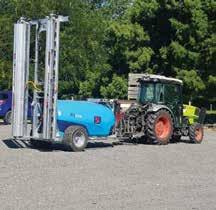
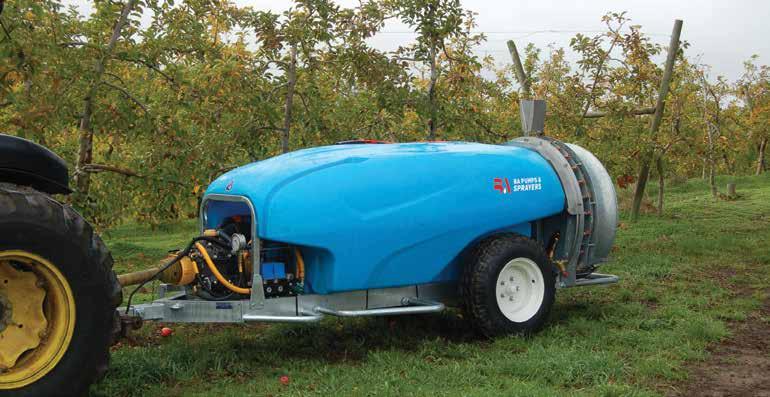
get another crop growing.
Burke says there have been some high prices for vegetables, but these are now starting to ease as more supply comes on stream.
“At this time of the year when we are doing a lot of prep for our winter crops, we are pretty lucky that we have had some good weather,” he explains.
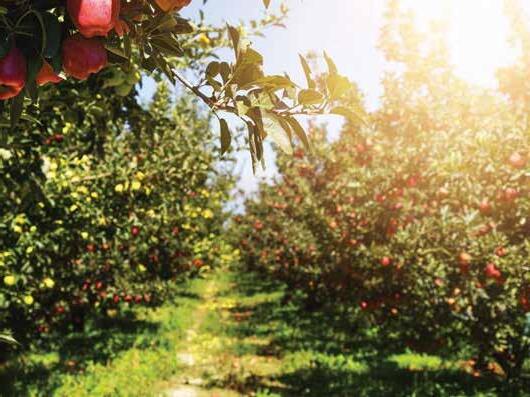
“It’s given us the ability to get some land ready for winter planting. I would say we are in an okay position as we head in to winter as we have got crop in the ground and we have land worked.”
One of the consequences of the cyclones and floods has been a drop in the supply of vegetables and some
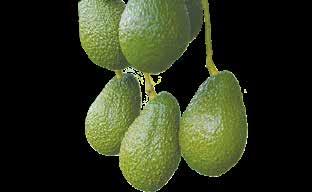
crazy prices such as $12 cauliflowers –a fact which has gained much media attention.
The result is that some people have stopped buying fresh veggies and many have turned to frozen product. Much of which is imported and is cheaper at the moment, but Burke says this will change. He predicts that the cost of frozen product will rise over the next couple of years.
Burke is determined to stop the trend away from fresh and his company is making a big push to make vegetables more affordable.
“We know that we have lost ground to other alternatives and the challenge
is about how to get fresh back into people’s minds and that means our industry needs to be more competitive,” he explains.
The answer to that, Burke believes, is to scale up the business and take the costs out of the equation. He says this is a global trend and is happening here, making it difficult for small suppliers to meet the demand on a daily or weekly basis and keep their businesses going.
But key to this Burke says is having quality infrastructure that enables growers to get their product to market on time – a problem which has been dramatically highlighted recently in New Zealand.
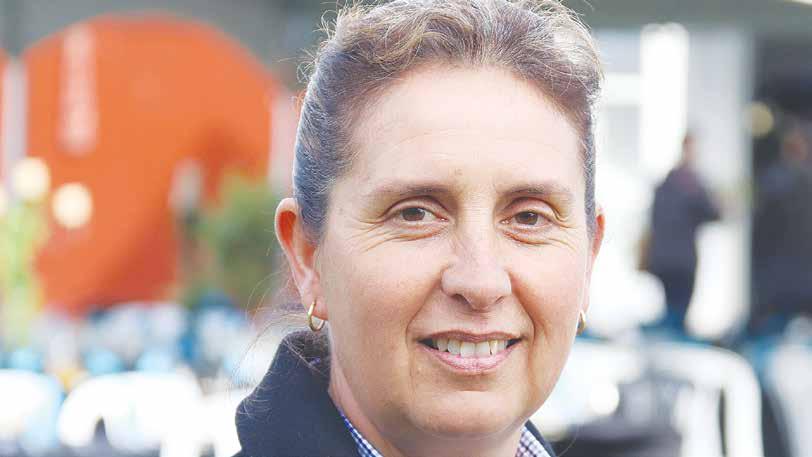
Ahuwhenua Trophy Management Committee chair Nukuhia
Hadfield is full of praise for all this year’s finalists – who she says had to cope with cyclones, frosts and other adverse weather events.
Hadfield says 2023 has been an especially hard year for the whole of the primary sector. “All three finalists are very special people who have shown amazing resilience and commitment to their own operations and to the legacy of Sir Apirana Ngata and Lord Bledisloe who inaugurated the trophy 90 years ago,” she says. – See full story pages 4-5.
HORTNEWS JUNE 2023, ISSUE 34 ISSN 2624-3490 (print) online) WWW.HORTNEWS.CO.NZ – Page 10
AHU FINALISTS PRAISED BA ORCHARD SPRAYER 2000 or 3000 litre models 920mm fan with 2 speed gearbox 10 roll over nozzles per side Manual, electric or autorate control 0800 833 538 | www.bapumpsandsprayers.com Also available as a 2000L tank with 3.2M tangential fans for 2D plantings. PREPARE TO BE BLOWN AWAY! The BA Orchard Sprayer is an air blast sprayer with axial fans designed for maximum coverage in tree crops. 2D PLANTING OPTION
Peter Burke peterb@ruralnews.co.nz
Speed the key to the country’s kiwifruit sector recovery
THE SPEED of dealing with the damage to infrastructure holds the key as to how well and how quickly the kiwifruit sector will recover from the ravages of Cyclone Gabrielle.
According to Colin Bond – chief executive of the kiwifruit growers’ group, NZKGI – says the longer it takes to deal with the problems the higher the cost will be to the individual grower and to the country as whole due to lost export returns. These problems range from silt in orchards to damaged infrastructure – such as buildings and stopbanks.
Bond told Hort News that growers whose prop-




erties are close to stop banks are not going to even consider removing silt, building new orchard infrastructure or replanting their vines unless there is certainty that their land will be protected in the future. He says reconstructing an orchard from scratch is both a costly and longterm commitment and could take up to five years minimum and potentially longer.
Realistically, he says horticulturalists can, once in a while, expect to lose an entire year’s production. “What isn’t realistic is to ask a grower to also fund significant damage from infrastructure failure,” Bond adds.
“Yes, a grower should be prepared to be working with their banks to
rebuild. But I have heard cases where septic tanks are full of silt and it’s unfair for a grower to have to set the capital aside to cover those sort of repairs.”
In Bond’s view, that’s where the Government
BIG BOOTS TO FILL!
NZ AVOCADO Growers Association chief executive Jen Scoular will step down in August after serving 12 years in the role.
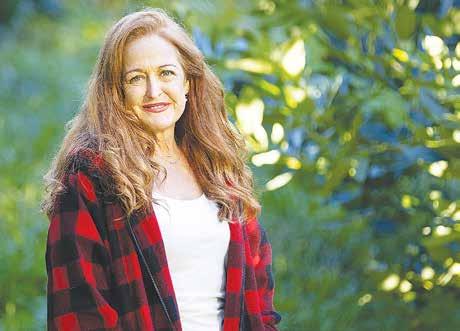
Scoular’s resignation was announced late last month by association chair Linda Flegg.
She says Scoular has served the association tirelessly over the past 12 years with many achievements along the way.
“When Jen took up the role after a four-year term as a trade diplomat in Hamburg, Germany, our industry was struggling and lacked engagement, communica-
tion and systems, which gave Jen a lot to focus on,” says Flegg.
“Under her leadership industry value has increased from $82m in 2011-12 to $231m in 2021, and the New Zealand market value from $19m to $62m in 2021-22. During her tenure the industry successfully achieved market access for avocados into both the China and India market, joined the biosecurity partnership with the government and achieved the first horticulture primary growth partnership in 2014, which finished in December 2022.”
needs to step in quickly for the good of some of these regional economies and that’s the message they are trying to get through to the government. “There is a lack of understanding about the issues in the Wel-
lington bureaucracy, but we are working hard with the government to make sure they understand the size of problem and where their support is best directed,” he told Hort News Bond says they are
NO SURPRISE!
Meanwhile, Bond says kiwifruit growers are not surprised at the news from Zespri recently that the sector has taken a big hit due to a series of major adverse weather events. Zespri says it will only be able to export 136 million trays this season, compared to the 171 trays million in 2022.
He says many growers in the Bay of Plenty lost their entire crop in the October frost and others suffered damage from hail, a warm winter and the cyclones. Bond adds that while some growers who lost their crop due to the frost, the vines have survived, and they are hopeful of a healthy crop in 2024.
“But for those with waterlogged or silt covered orchards, the outlook is concerning, and this could affect production beyond next season.”

having regular conversations with officials and are making themselves available to meet with them at the drop of a hat
to make sure they have the best possible understanding and can make timely and quality decisions.
Flegg says the 10th World Avocado Congress held in Auckland in April was a fitting finale for Scoular.
“With five years in the planning, against the odds of Covid and border closures, it was a phenomenal success.”
Scoular will remain in the role until mid-August and will take the opportunity to farewell some of the 1,400 avocados growers across the growing regions.
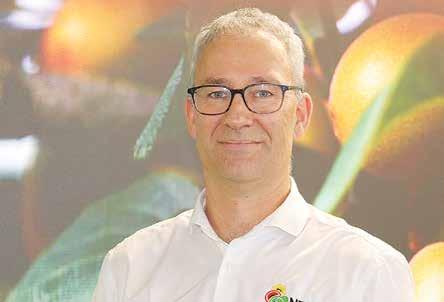
Flegg says Scoular is leaving “a legacy that will require some big shoes to fill”.
KIWIFRUIT ROOTSTOCKS AVAILABLE NOW
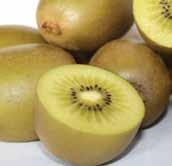

Available for planting this Winter/ Spring:
Bruno rootstocks (field grown)
Bruno rootstocks (container grown)
Bounty-71 rootstocks (field grown).
KVH certified from PSA-free Nelson.

Minimum order 50 trees.
Quantity discounts available.
Please contact our Sales Team: Kate Marshall, 027 4201 033. kate.m@waimea.group
Jeff Sandford, 027 4201 003. jeff.s@waimea.group
JUNE 2023 2 HORTNEWS Registration is FREE! KEEP UP-TO-DATE WITH OUR WEEKLY NEWSLETTER. www.ruralnews co.nz/enewsletter
Peter Burke peterb@ruralnews.co.nz
NZKGI’s Colin Bond says the longer it takes to deal with the problems the higher the cost will be.
NZ Avocado Growers Association chief executive Jen Scoular will step down in August after 12 years in the role.
Gabrielle blows T&G profits
structures devastated by the event.
THE IMPACT of Cyclone Gabrielle has delivered a major financial blow to one of New Zealand’s biggest apple grower and exporters.
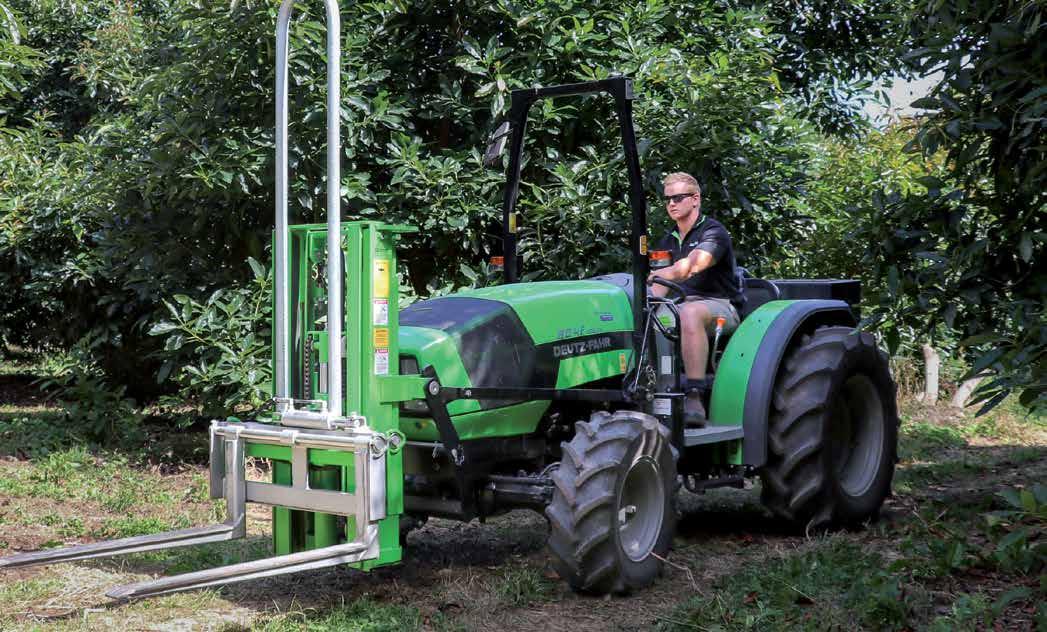
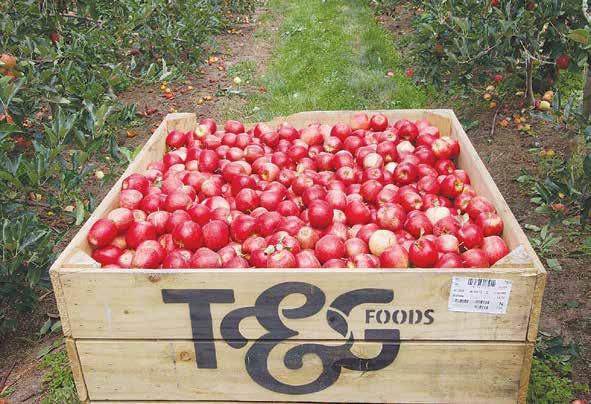
T&G says following a comprehensive assessment of the impact of February’s Cyclone Gabrielle, group profit for the 2023 financial year is now forecast to be a loss before income tax of between $28m to $34m.
Last year, T&G recorded a loss of $3.3m before tax – compared to a $9.8m profit in 2021.
The listed company, majority-owned by global conglomerate BayWa Global Produce, says the forecast allows for all known cyclone impacts –including clean-up costs – and includes a provision for the one-off writedown of trees and planting
Cyclone Gabrielle devastated the Hawke’s Bay region, wiping out orchards and vineyards and destroying infrastructure. T&G says significant work is underway on the remediation of its impacted orchards in Hawke’s Bay, particularly in relation to the removal of silt from around trees.
“While most of T&G’s orchards (comprising both owned and leased orchards) were not impacted by the cyclone, four orchards were severely impacted, representing approximately 13% of T&G’s planted hectares in Hawke’s Bay,” it says.
“A further 22% of the planted hectares in Hawke’s Bay were impacted to a varying extent and are expected to have reduced produc-
tive capacity for two-tothree years.”
The company says it is continuing to work with its insurers to assess potential recovery.
A cost-reduction pro-

gramme has been implemented in response to the cyclone and is expected to result in material cost savings in 2024 and beyond. The T&G board says it remains confident
in the company’s transformation strategy, which is projected to accelerate earnings momentum, particularly as apple volumes increase in line with the maturity profile of its
recent significant investments in orchard development, notwithstanding the effects of Cyclone Gabrielle.
On the 2023 crop, the company says its New
Zealand apple crop has now been fully harvested.
While its overall New Zealand supply volumes are down 19% on last year, at this stage the crop is 14% sold, with the pricing outlook appearing strong, particularly for its premium variety Envy.
T&G says a fast-start marketing campaign has been implemented in Asia to optimise pricing opportunities, supported by an extensive air-shipment programme, it says.
On a positive note, T&G’s new automated packhouse in Whakatu, Hawke’s Bay, has been successfully commissioned and is now fully operational as scheduled.
The company says its Fresh business has commenced the year strongly, assisted by higher prices across most fresh produce categories and continued improvements in operational efficiencies.
WORK NOW. PAY LATER.
3 JUNE 2023 HORTNEWS
Sudesh Kissun sudeshk@ruralnews.co.nz
6 MONTHS DEFERRED PAYMENTS. Ask us about our flexible finance packages, there’s one that’ll suit your business. Take delivery of your brand new Deutz-Fahr tractor to get you through the busy period and don’t start payments for 6 months. AGROPLUS deutz nz * Terms, conditions and standard lending criteria applies. Limited time offer while stocks last. Power Farming NZ | www.powerfarming.co.nz | 0800 627 222
T&G says Cyclone Gabrielle has delivered a major financial blow.
Top Maori growers attract large
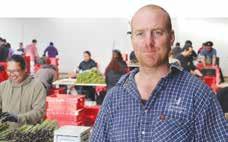

For the past month, the finalists in this year's Ahuwhenua trophy for horticulture have been holding field days at their respective orchards. As Peter Burke reports, the field days have taken place despite the adverse weather events that all of them have suffered from during the past six months.
FIELD DAYS are an integral part of the Ahuwhenua competition as they allow members of the public to come and see how each entity has made it through to the finals of this prestigious contest.
They are also part of the judging process to determine the ultimate winner. Large crowds attended all the field days and the quality of the actual events was of a high standard. This is especially true given that all of the finalists were still having to deal with the aftermath of the adverse events and coping with – in some case – sig-
nificant crop losses.
The first event was held at Whiritoa orchards at Te Teko in the eastern Bay of Plenty.
This orchard is owned by Māori Investments Limited (MIL), which has 5000 shareholders. It has two orchards – one, just over five hectares which produces organic gold kiwifruit that was planted in 2022 and a second which is 6.68ha and covered, which produces SunGold kiwifruit.
MIL currently employs seven permanent staff and take on up to 20 fixed term employees during the peak seasons.
The field day began
orchard, but that Kokohinau was a very appropriate place to stage their presentations given its history with MIL.
O’Brien says while all the fruit in their orchards have been harvested, it was not an easy task given the wet weather. He says other adverse events such as hail and frost caused problems for MIL this past season.
“Everybody has suffered through the wet weather events but we fortunately we dodged a bullet with cyclone Gabrielle, but we had other challenges with frost and hail,” he told Hort News
onion sector is extremely grateful for the hard work of New Zealand’s negotiatorsanddiplomatswhohaveworked tirelessly to conclude this agreement. “The New Zealand team has had atjoinZoomcallswiththeircounterparts night,extremelyinconvenienttimesofthe for example.” The conclusion of this agreement willbenefitoniongrowersandregional communities, from Pukekohe to Can- terbury. Onions are an important rota- tion crop for many vegetable growers. Having onions in a rotation allows growers to rotate between other crops such as lettuces, potatoes, carrots etc, which helps to control pests and diseases. In 2019, the Sudesh Kissun sudeshk@ruralnews.co.nz GETTING READY! MANGAWEKAASPARAGUSmanager SamRaineyoverseesan80hectare asparagusinthecentralNorthIsland. WhenHortNewsvisitedtheproperty inlateSeptember,Raineyandhisstaff wereinthefinalstagesofpreparing fortheharvest.Thepackhousewas beingsetupandatthesametimethe firstspearsofasparaguswerestarting toappear.Whilethetotalsizeofthe propertyis80hectares,theywillpick just65hectaresthisseason–which equatestoupto250tonnes. Seestorypages4and5. Replacement Spray Pumps & Spray Kits Webbline Agriculture is a direct importer/reseller of a full range of pumps from market-leading manufacturers, along with service kits and accessories. Large range in stock. Dealer enquiries are welcome. View online - www.webbline.co.nz
completing the deal after little more than a year of negotiations. Kuperus says the NZ worth $70 mil- lion annually. “We have strong ties with UK customers, with a long his- tory of exporting high-quality honey products there. However, the current in-quota tariff rate of 16 per cent hasbeenasignificantbarriertotrade,”says KarinKos,chiefexecutiveofApiculture New Zealand.
NOW PUBLISHED MONTHLY! To book your advert contact your local sales rep

NewZealandonionindustrywasworth $200 million back to the grower, 85% of which came from exports. MeandealwhileApicultureNewZealandsaysthe industrywillbeagreatoutcomeforthebee andwillimprovecompetitivenessinoneoftheirlargestexportmarkets. The UK consistently ranks as one of top three export markets for New Zealand honey and is Contact Ben 021 819 482 | ben.boakes@webbline.co.nz WAIKATO •CANTERBURY • SOUTHLAND branches





JUNE 2023 4 HORTNEWS
HORTNEWS Introducing Hort News, a national publication serving the needs of our booming horticulture sector. Distributed with the leading national farming publication Rural News, Hort News will be delivered to all key horticulture regions nationwide. It is the complete solution for readers and advertisers, covering every aspect of the wider horticulture industry – news, agribusiness, management, markets, machinery and technology. Contact: STEPHEN POLLARD Auckland Sales Representative Ph 021 963 166 LISA WISE Waikato Sales Representative Ph 027 369 9218 RON MACKAY Wellington Sales Representative Ph 021 453 914 KAYE SUTHERLAND Christchurch Sales Representative Ph 021 221 1994 RURAL NEWS TO ALL FARMERS, FOR ALL FARMERS Publishers of • It’s the one-stop way to reach the horticultural sector • News and information for all types of growers • 10,000 nationwide distribution • Sent out with the trusted and established publication Rural News HORTNEWS NOVEMBER 2021 ISSUE 19 2624-3490 print ISSN 2624-3504 WWW.HORTNEWS.CO.NZ Bumper cherry –predictedcrop Page 7 Sweet result for hort! SOME HORTICULTURE farmers are also bracing for financial relief from the proposed free trade agreement between New Zealand and the United Kingdom. Apple, pear and onion growers are among those set to benefit although ers.notasbigmajormeatanddairyexportAlanNZApplesandPearschiefexecutive PollardsaysatthemomenttheUK is a $100 million market for growers, consistently ranking in the top two or three. “We have a quota between August and December where volume above that quota attracts an 8% tariff,” he told Hort News Under the proposed FTA, the tariff on pears will be removed on day one, with the tariff on apples reducing over three years “So, there is some financial relief andwebenefitfromamorewelcoming regulatory environment,” says Pollard. Onion growers will face zero tariff from day one. The tariff on New Zea- land onions is currently 8%. New Zealand currently exports $11 million worth of onions to the United King- domOnionsannually. NZ chief executive James Kuperus says the FTA will ensure that this country’s onion exports continue to grow as the world comes to terms with Covid. “Trade and exporting ben- efits a diverse range of New Zealand businesses,” he says. “Without clear trading arrange- ments, improved market access and reduced tariffs, it is extremely difficult totoexportfromthebottomoftheworld larger economies like the United Kingdom. “Of immediate benefit to the onion sectoristheexpectationoftariffsbeing eliminated on onions, once the agree- ment comes into force.” The New Zealand Government announced the details of an “in-prin- ciple” New Zealand-UK FTA last week as trade officials neared
MIL board chair John O’Brien described the field day as fantastic with an unexpectedly good turnout.
large crowds to open days
NGAI TUKAIRANGI TRUST SHOWS OFF RECOVERY
THE FINAL field day for the competition was held at Ngāi Tukairangi Trust’s orchards in the Hawkes Bay, which attracted a crowd of more 250 than people.
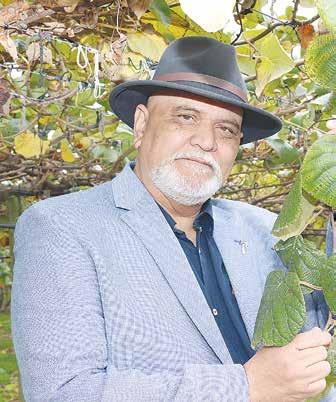
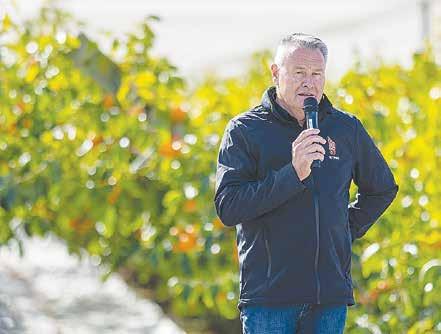
The Trust has orchard operations in four regions across the country, the largest of which is situated near Hastings. It also has orchards in Northland and the Bay of Plenty at Matapehi – the latter is just a matter of a few kilometres from the centre of Tauranga city.
Wi Pere’s day
THE SECOND field day took place at the orchard of Wi Pere Trust, at Waipaoa near Gisborne, with more than 250 coming along to look at the property.
Guests were welcomed at Tangihanga Orchard, Wi Pere Trust’s blueberry, citrus and apple orchard. Here they heard from members of the Wi Pere board and staff about the operation.
This orchard was badly damaged by Cyclone Gabrielle. As part of the presentation, guests were shown a video of the damage to highlight the work that has been done by staff and trustees to get the operation up and running.
Wi Pere Trust Horticulture consists of 79ha of permanent fruit crops. This is made up of 26ha of Gold kiwifruit (11ha of which is organic), 4ha of persimmons, 15ha of citrus, 4ha of blueberries and 20ha of Rockit and 10ha Tarzi of apples.
Wi Pere Horticulture is managed by general manager Wayne Hall, with eight full-time staff and employing up to 85 casual workers at key times.
After the presentations in the marquee at Tangihanga, visitors were taken by a fleet of buses to the Toroa Orchard. On the way to this property a special radio link was set up for people to get more infor-
mation about the Wi Pere operation. They heard about the damaged caused by the floods and how the operation had managed the after effects of Cyclone Gabrielle. At this site, guests were able to see persimmons that were in the process of being harvested.
Hall told Hort News he was ecstatic about the turnout of the field day and says the good weather on the day enabled them to showcase their operation. He added how people were amazed to see how well Wi Pere Trust had recovered from Cyclone Gabrielle during the past two months.
“By showing them photographs of what it was like, compared to how it is today was revealing to many people,” Hall explained.
“Our apple and blueberry orchards suffered badly during Gabrielle. In regard to apples, we lost about 1.6 hectares of the 20 hectares planted.”
Hall says the other benefit of the field day was the opportunity to tell people about the Ahuwhenua Trophy competition and how this has contributed to the growth of Māori agribusiness.
“A lot of local people weren’t familiar with what Ahuwhenua was all about and were really amazed at the prestige of the event.”
The Hastings operation consists of 106ha of mostly G3 kiwifruit, but there is also an apple orchard where Rockit and Envy apples are grown. The kiwifruit operations are unique in that they are entirely covered by overhead cloth and this is the largest area of overhead shelter in NZ.
Guests were welcomed onto Waipatu Marae by Ngāti Kahungunu, and then heard presentations from Ngāi Tukairangi trustees and staff about the operation. They were also shown photographs of the damage caused by Cyclone Gabrielle and how Ngai Tukairangi is planning to repair this.
After hearing the presentations, those attending the field day had the option of going by bus to the Tukituki apple orchard, which was not damaged by the cyclone or the Korokipo kiwifruit orchard which was damaged.
At Korokipo, visitors could see repairs being made to the stop bank on the Ngaruroro river, which breached its banks and flooded the property and completely covered the vines. While a part of the orchard close to the river was badly hit, other parts survived – despite the vines being covered in floodwaters. It’s estimated that 75% of this year’s kiwifruit crop at Korokipo was lost in the floods.
At the apple orchard at Tukituki, visitors saw some amazing innovation and technology in operation – including picking platforms run by solar power and spraying equipment designed to
LIKE A FINE WINE, OUR STAINLESS STEEL TANKS ARE CRAFTED WITH PRECISION, CARE AND EXPERTISE.
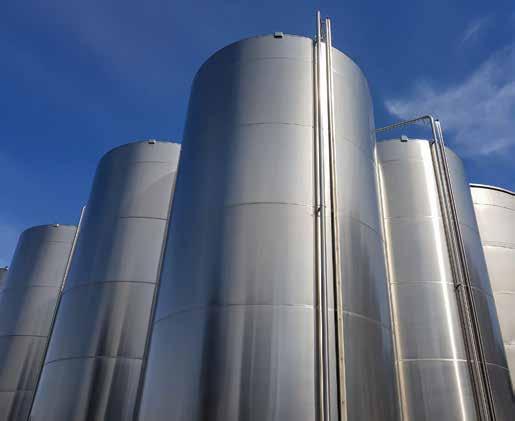
With a legacy spanning decades, DTS is a trusted supplier of vats and tanks to New Zealand’s food and beverage industry. We run a dedicated lean manufacturing facility, where we continuously refine our processes to ensure optimal results and value for our customers.
Our expert engineering team can deliver bespoke cooling and heating systems, tailored precisely to your requirements. For a quality food or beverage tank that matches your standards but won’t cost the earth, call DTS for a no-obligation quote.
reduce spray drift. Ngai Tukairangi chair Ratihi Cross says the field day was a great success and he was pleased with the massive turnout. He told Hort News it was great to see support from local iwi, as well as a good cross section of industry people. Cross says given the damage suffered at the Heretaunga orchards, putting the field day together was no easy task. He added that because of being such a large organisation, they were able to bring in staff from other centres to help.
“In one way, we were also lucky because there was virtually no silt left in the orchard because of the high velocity of the water and that will help us get production back to around 80% next season,” Cross says.
“When you look at the orchard, you can actually feel the damage in a spiritual sense. There is a spiritual affinity with humans and natural disasters.”
5 HORTNEWS JUNE 2023
Wi Pere Horticulture general manager Wayne Hall was ecstatic about the turnout for its field day. – PHOTO CREDIT: ALPHAPIX.
PH: 0800 500 387 | WWW.DTS.CO.NZ
Ngai Tukairangi chair Ratihi Cross says the field day was a great success.
Cyclone recovery research aims to give better information
SCIENTISTS FROM Plant & Food Research have been collecting data from apple orchards in Hawke’s Bay to better understand the impact of Cyclone Gabrielle.
The Soil HealthAssessment and Recovery Project, which got underway two weeks after Cyclone Gabrielle, has involved working with about 30 orchard owners and managers to study the effects of silt and waterlogging on apple blocks. Working with industry body New Zealand Apples and Pears Inc, the aim is to develop resources that will be shared industry wide and help optimise grower’s spend on recovery efforts.
“This has been an extraordinary event and the industry has done a fantastic job of getting through the harvest under extremely challenging conditions,” says New Zealand Apple and Pears chair Richard Punter.
“Heading into winter, there are more complex decisions to be made and our focus is on keeping information flowing through to growers.”
Project leader, Dr
Stephen Trolove from Plant & Food Research says while damage in the region varies significantly, it’s estimated that the cyclone has cost the Hawke’s Bay horticulture industry about $1.5 billion. This is in terms of both lost production and
replanting costs.
Around 4000 hectares of apple orchards alone have been affected by silt or the waterlogging following the cyclone.
He adds that with winter pruning around the corner, growers will be considering where
to focus their recovery efforts, with the hope of nursing any stressed trees back to good health and ensuring they can deliver a crop in coming seasons.
“Waterlogging can suffocate trees, and extremely wet soils can lead to serious root dis-
ease issues. We want to get more information on the implications for longer term tree survival,” Trolove explains.
“The data we collect will improve our understanding of the issues presented in the different blocks and which man-
agement practices were more effective, enabling growers to make better decisions when floods occur in the future.”
Plant & Food Research has partnered with horticultural consultants AgFirst and Fruition Horticulture on the project,
who have used their networks and expertise to help identify orchards for the study and assist with data collection and interpretation.
The first round of surveying on orchards took place two weeks after the cyclone and orchard blocks are now being revisited for the second time, to reassess the condition of trees and groundcover.
Dr Jim Walker, who has led Plant & Food Research’s industry engagement since the cyclone, says other projects aimed at supporting the recovery of the horticultural sector in the aftermath of the February storm are also underway.
“We are listening carefully to feedback from industry partners and growers with a focus on building back even better,” he says.
“These initial projects and the data collection that’s underway could also help inform future research, such as orchard design for a changing climate, as well as the work we do with developing new rootstocks and apple varieties.”
‘Green’ loan aims for sustainability
The country’s largest family owned and single-site kiwifruit and avocado post-harvest service provider has signed up to a sustainability linked loan (SLL) ASB.
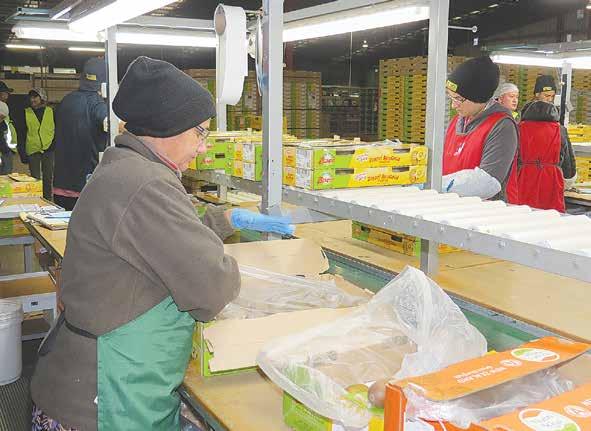
Trevelyan’s has taken on a SLL, which requires it to commit to key environmental, social and/or governance (ESG) targets, with borrowing costs adjusted based on its performance against these targets.
The company says it has committed to three key areas of focus –reductions in both waste and carbon emissions and improved wellness metrics for its workforce.
Managing director James Trevelyan says the focus on waste, carbon emissions and wellness feeds back to Trevelyan’s sustainability framework of three key pillars – to work smart, tread lightly and treat their people with respect. “We are fully aware that sustainable practices are a longterm investment and will drive ethical and financial value for our business,
our people and the planet. We are delighted to partner with ASB with this shared vision.”
He says one of the company’s goals is to reduce its waste to landfill by 10% per year, with a further intention of sending zero waste to landfill by 2030.
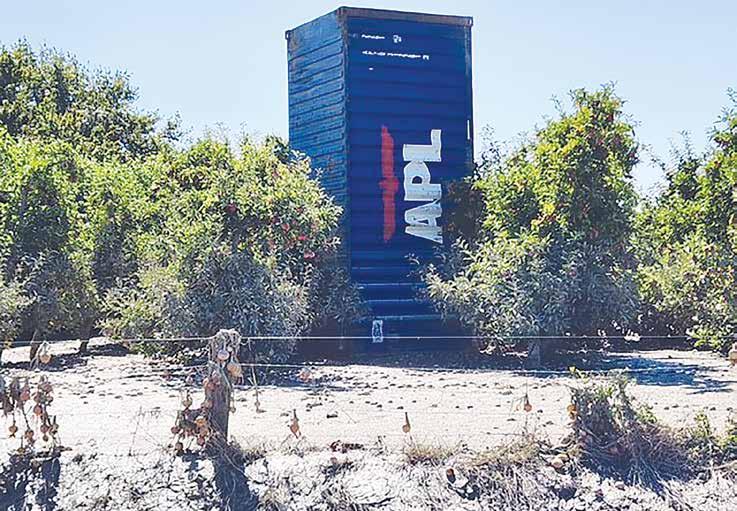
ASB head of sustainable finance James Paterson says it’s encouraging to see businesses increasingly focused on sustainability.
“The work from Trevelyan’s with this new SLL is a credit to them and their desire to grow a better future and tread lightly as they do so. We are proud to help bring this to life.”
Patterson says ASB is progressing well on its mission to support industry transition. The bank has a cumulative sustainable lending target of $6.5 billion by 2030 for green, social and sustainability-linked lending across the rural, property, corporate and business sectors – with around $810 million committed to date.
JUNE 2023 6 HORTNEWS
Plant & Food Research says while damage in the region varies significantly, it’s estimated that the cyclone has cost the Hawke’s Bay horticulture industry about $1.5 billion.
Trevelyans says one of its goals is to reduce its waste to landfill by 10% per year, with a further intention of sending zero waste to landfill by 2030.
MAKE YOUR MARK IN HORTICULTURE

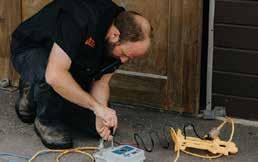
ABOUT THE COMPETITION
The Royal NZ Institute of Horticulture Education Trust in conjunction with Young Horticulturist official partners; T&G Fresh, Fruitfed Supplies and Countdown are proud to announce the launch of the 2023 Young Horticulturist Competition.
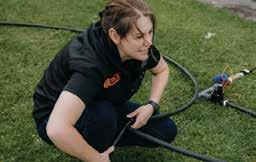
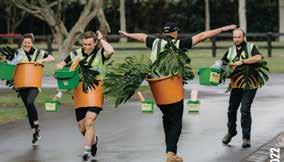

The Competition recognises and celebrates excellence in people under the age of 30 employed in the horticulture industry.


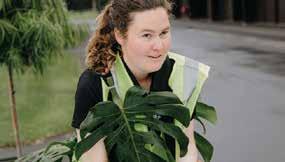
THE GRAND FINAL DATES
DAY 1 Tuesday 7th November 2023, Karaka Bloodstock, Auckland
DAY 2 Wednesday 8th November 2023, Karaka Bloodstock, Auckland
The Competition consists of seven components, some of which are to be completed before the 7th November. Contact your sector organiser or visit www.younghort.co.nz for more details.
“The competition is an opportunity to make great connections with your peers across the industry. It’s an awesome place to test not just your knowledge and practical abilities, but your leadership abilities as well.”
REGAN JUDD, 2022 YOUNG HORTICULTURIST WINNER
‘Data Supermarket’ serves up options

A new online storehouse of maps and data aims to provide a wider variety of land use options for New Zealand’s regions.
It could see production of staple crops like potatoes and kiwifruit expand far beyond their traditional growing regions.
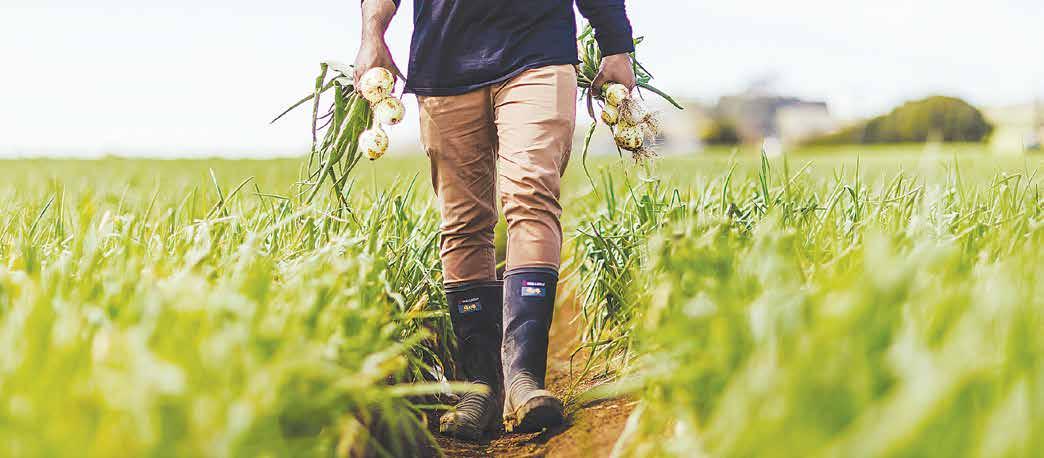
Te Puke is currently New Zealand’s kiwifruit capital – but new research shows that top spot could be contested in future – with
suitable kiwifruit production land identified in Waikato, Taranaki and the top of the South Island.
Information about the
land use suitability and production potential of a wide variety of crops has become much easier to find with the launch of the Data Supermarket. This is a new online storehouse of data about the ingredients, food and fibre we can grow in New Zealand, now and in the future.
It includes information about a wide variety of vegetable, fruit, arable, animal, plant and tree crops, plus climate and economic data.
“The goal of this work is to help New Zealand’s primary sector identify a much greater range of suitable land opportunities,” says research lead Dr Robyn Dynes, of AgResearch.
“We know we can grow a much greater range of food and fibre in New Zealand. But the question has been: what will grow well, where? Our research aims to help people answer that.”
The data repository contains a wide range of


datasets with information on suitability, yield maps, climate change impacts and economic information.

“Farm advisors with good technical skills will be able to use the data to create a short-list of potential land-use options that may be feasible, for their clients to consider as candidates for in-depth business cases from local experts,” Dynes explains.
“Our hope is that by bringing these datasets together and providing open access, innovators will also see potential to create new tools.”
A large team of researchers from multiple institutes and scientific disciplines produced these datasets as part of the Land Use Opportunities: Whitiwhiti Ora research programme funded by the Our Land and Water National Science Challenge.
This reliable and robust data is freely available to everyone planning or providing advice on
land-use options in New Zealand.
The wide range of new datasets provide a broad understanding of the benefits and consequences of many land use opportunities.
The datasets were created between 2020 and 2023. The range of datasets is still growing, with researchers creating and curating environmental, economic, social and cultural information for different land use options.
Each dataset includes information about its limitations and how the data was produced. Access to GIS software is required to use and interpret spatial data after downloading it from the Data Supermarket.
Data is open-access and suitable for New Zealand use only. The information can be downloaded for use in thirdparty tools.
The Data Supermarket is now accessible at https://landuseopportunities.nz
JUNE 2023 8 HORTNEWS
Read us until the cows come home! www.ruralnews.co.nz
Beautiful New Zealand grown, cold pressed, internationally certified Extra Virgin Olive Oil. www.twooldsoldiers.co.nz EXTRA VIRGIN OLIVE OIL New Zealand 250 ml
Information about the land use suitability and production potential has become much easier to find with the launch of the Data Supermarket.
Huge hop garden aims to further milk growing industry
A FORMER dairy farm in a secluded valley on the fringe of Nelson Lakes National Park is set to become New Zealand’s biggest hop garden.
Mount Ella Station, near Murchison, previously ran more than 3000 milking cows – but now they’re all gone, replaced by rows of tall trellises on which the aromatic beerflavouring vines grow.
Nelson Lakes Hops, the new sister farm of industry leader Freestyle Hops, took over part of the 1000ha farm between Nelson and Westport in 2021, after doing extensive soil, water and climate analysis on the property.
The venture defies conventional wisdom –a previously-held view that hops could only be grown commercially further north in the Tasman District.
“There hadn’t been much effort to expand hops farming at scale to elsewhere in the countrybut the data we collected convinced us this was an ideal location,” Nelson Lakes Hops director Richard Wong explains.
The farm is the result of careful consideration and extensive planning with the support of hop grower and processor, Freestyle Hops, and leading brewery, Garage Project.
The farm is large enough to allow the company to think big, and it
has developed plans for growing and processing hops on a scale never seen before in New Zealand. The final product will become a new addition to Freestyle Hops’ core offering.
Once complete, the farm will have over 370 hectares planted in hops, with two high-tech multimillion-dollar processing plants on site. Further expansion opportunities could take the farm beyond 550ha of hops.
“New Zealand hops varieties are highly sought-after internation-
ally,” Wong says. “Their unique aromas and flavours make them popular with craft beer makers around the world, and we’ve already had extremely encouraging feedback from our first harvest.”
The emergence of Hāpi, a joint venture between Garage Project and Freestyle Hops, to promote the New Zealand hop industry attracted Wong to the project and the value hops can bring to the New Zealand economy.
“This is a high-value
horticultural product, and it has significant export potential,” Wong adds.
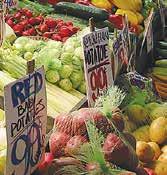
“The demand is there for high-quality hops. We just need to grow more and make sure we get the very best prices for it –the opportunity is huge.”
After years of intensive agriculture in the valley, Wong is equally passionate about making the company’s operations as environmentally sustainable as possible.
Most of the power needed for the hops processing plant can be taken from a neighbour’s hydro-
electric scheme.
Combined with the short growing season, from October until March, and the use of drip irrigation, he says the farm will have a significantly reduced carbon footprint and impact on the environment, from the previous dairy operation.
“We’re looking at planting more trees around the garden, especially in the unproductive areas, as that will further enhance the environment and can help us offset any carbon we use – it’s cer-
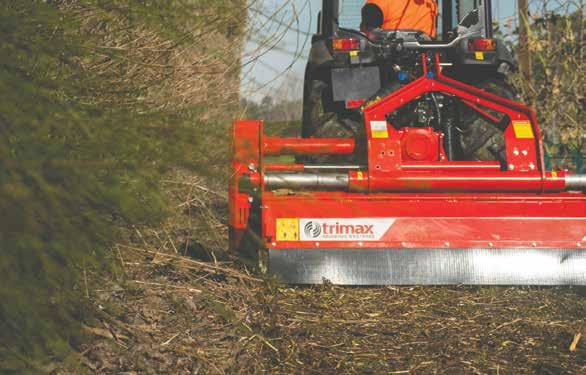
tainly something we want to explore more,” Wong says.
While teams have been working to plant the farm in hops and install the extensive trellises needed to support the vines, Nelson Lakes Hops’ largest capital investment has been importing and installing the processing plant.
“It’s been a pretty challenging time, given the inflationary period that we’ve had, rising construction costs and supply chain issues,” Wong concedes.
“Thankfully we’ve been able to manage the budget very successfully with the help of our shareholders and ANZ, who have been really supportive throughout.”
ANZ Business general manager John Bennett says the venture is a great example of what is possible when industry leaders come together and combine their strengths.
“Changing Mount Ella Station from dairy to horticulture, Nelson Lakes Hops and its partners have discovered an opportunity, adding value at every step,” Bennett explains.
“They’ve attracted capital to the industry and are now well on their way to proving that a scalable, high-value crop like hops is a great option for all involved.”
Wong is keen for the garden to become a strong contributor to the local economy, offering jobs and training to those interested in working in the industry.
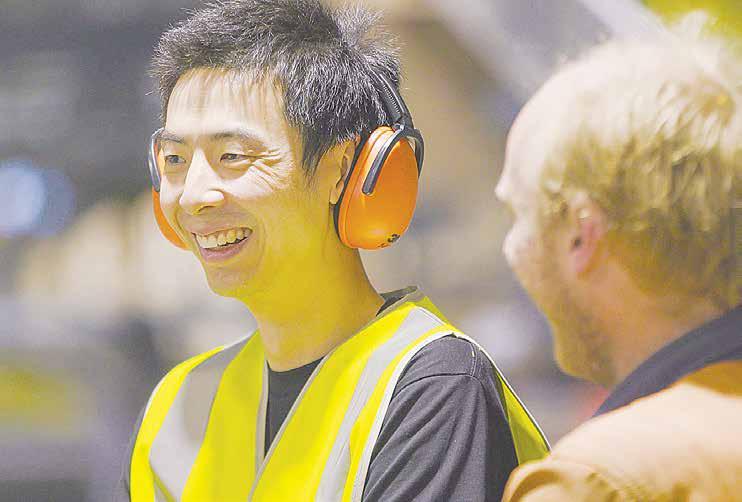
“We aim to be the largest contiguous hop farm in New Zealand,” he says. “We want to help push the New Zealand hop industry to a new phase of growth and for it to become a leader in quality.
“If we can do that, I think that will result in long term value for our shareholders, the local community, and the country.”
9 JUNE 2023 HORTNEWS
MULCH BRANCHES UP TO 90MM IN DIAMETER Are you hitting your target market? Contact your local sales representative for more information ✔ BREAKING NEWS ✔ MACHINERY REVIEWS ✔ MANAGEMENT STORIES ✔ AND MUCH MORE... HORTNEWS RURAL NEWS TO ALL FARMERS, FOR ALL FARMERS Auckland Stephen Pollard Ph 021-963 166 Waikato Lisa Wise Ph 027-369 9218 Wellington Ron Mackay Ph 021-453 914 Christchurch Kaye Sutherland Ph 021-221 1994
Nelson Lakes Hops director Richard Wong says the new hop farm is the result of careful consideration and extensive planning.
World avocado trade to grow
A NEW report by Rabobank says global avocado trade will continue to grow in the next few years, but the market will be more competitive.
The Global Avocado Growth Far From Over report says global production expanded by a compound annual growth rate (CAGR) of about 7% during the past decade to 8.4m tonnes. Meanwhile, production in Mexico –currently accounting for 30% of global avocado output – grew by a CAGR of 6%.
In Colombia (12% of global production), Peru (9%), and Kenya (6%) production increased over the decade by a CAGR of approximately 15, 12, and 11% respectively.
Among the next largest exporters, Peru, Spain, and Kenya expanded by a CAGR of 22, 6 and 15%
respectively between 2012 and 2022. These countries mainly supply the European market.
On the other hand, the US – among the world’s largest avocado-producing countries in 2012 –dropped in the ranking and is no longer a top 10 producer.
Increased production in countries with complementary harvesting seasons has allowed year-round availability in key markets, including the US, EU, and Asia.
Cindy van Rijswick, Rabobank global strategist fresh produce, says attractive prices and returns during that period were relevant drivers to expanding production in key regions.
“With exports increasing at an average annual growth rate of around 8% over the past decade, Mexico reaffirmed its
Fully Escorted Tours




Nelson Bays & Marlborough
Oct 22, 2023
6 Days
Stay in sunny Nelson & Blenheim. Enjoy a Queen Charlotte Sound cruise, lunch & wine taste at Seifried winery, a Greenshell Mussel Cruise. Visit Motueka, Kaiteriteri, Abel Tasman National Park and Pupu Springs. Train to Omaka Aviation Centre.
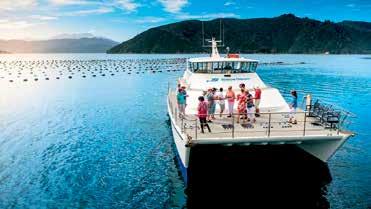
Forgotten Highway & Taranaki
Nov 7, 2023 + Feb 13, 2024 6 Days
Visit Hobbiton, travel 40km by Rail Cart into the Forgotten World - 10 hand dug tunnels and over 25 bridges. New Plymouth sightseeing tour, cruise aboard Paddle Steamer Waimarie, then Northern Explorer train back to Auckland.
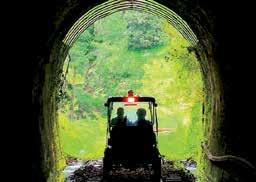
place as the largest avocado-exporting country in the world, surpassing 1m tonnes in 2022,” she explains. “We believe there is room for significant growth in several markets around the world, as per capita consumption is highly variable.”
Globally, the US remains the largest destination market, with imports increasing by a CAGR of about 8% from


2012 to 2022. Behind the US, the largest avocado importers between 2012 and 2020 were the Netherlands, Spain and France, with respective CAGR’s of 14, 20 and 8%.
The global commercial market value of fresh avocados is estimated to be around US$18 billion in 2022.
Sustainability concerns remain on the agenda for avocado producers, particularly water
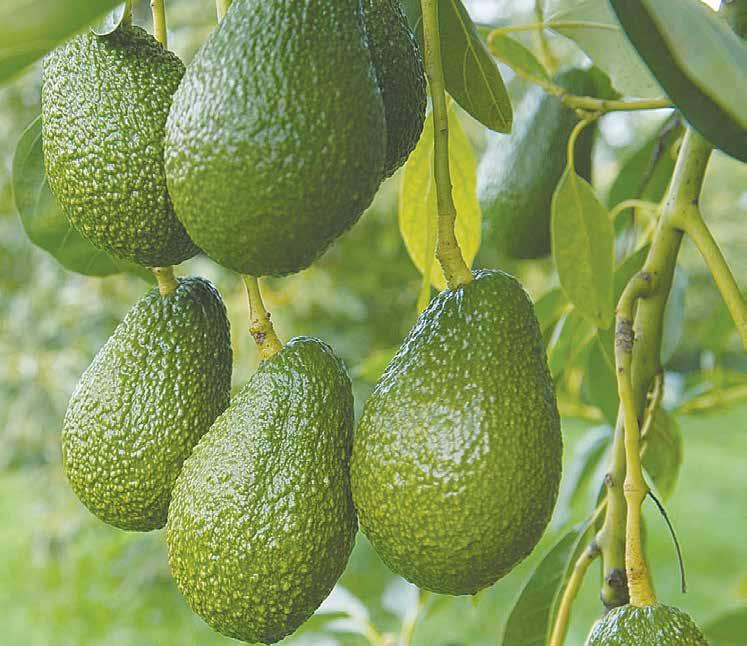
Registrations now open.
usage. Because of this, Rabobank says avocado growers have invested in advanced irrigation systems to improve water efficiency.
Despite the growth in market diversification in recent years, Rabobank associate analyst Pia Piggott says 2022 brought volatility to the global economy which weighed on demand for avocados.
“Weakening currencies in Asia, higher prices

and increased refrigerated container rates were not supportive for New Zealand avocado demand. We expect some of these headwinds to continue in 2023.”
A combination of sufficient supply in Australia, decreased demand from Asian destinations and fewer export quality fruit saw New Zealand export volumes drop 20% in 2022. Meanwhile, production was affected by

For more information and to register: https://conferences.co.nz/hort2023
significant wet weather events causing waterlogged soil, poor pollination and an above average reject rate.
“We expect the 2023 season to bring lower production followed by a bumper crop in 2024,” Piggott adds. “With plenty of production growth expected in the next few years, rebuilding market share in Asia will be a priority for securing demand.”

JUNE 2023 10 HORTNEWS
Leo Argent
Rabobank says global avocado trade will continue to grow in the next few years.
Platinum Sponsor
Silver sponsors
www travelwiseholidays co nz 0800 11 60 60
Bonded for Your Protection Since 1993 Door to Door Service in Auckland Metro Area
New tool aims to help growers better manage risks
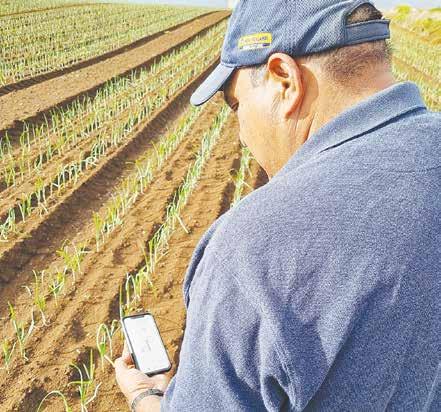
COMMERCIAL VEGETA-
BLE growers now have access to a new tech tool designed to support decision making and better management of common New Zealand plant diseases, including Downy Mildew.
The Vegetables New Zealand (VNZ) Weather & Disease Portal, launched in April, provides weather forecasts and easy-tounderstand information about disease risk. It does this by combining data from a nationwide network of weather stations with disease models from leading New Zealand researchers. The tool is available to all commercial vegetable growers via the ‘Weather & Disease’ button on the VNZ website, www.freshvegetables. co.nz
“We are thrilled to be making this tool available to our growers.
Weather plays a crucial role in the production of vegetables and having readily available, accurate information helps our growers make informed decisions around crop activities,” VNZ research, development & extension manager Daniel Sutton says.
“At present, it offers weather insights and a disease model for Downy Mildew risk which will be of particular interest to shallot and garlic crops. However, there’s huge potential for more pest and disease models to be added over time, based on what will provide the most value for vegetable growers.”
One of the many growers who will benefit is Kirit Makan, who grows onions, potatoes, leeks, pumpkins and butternuts on his 50-hectare property in Pukekohe.
“I’ll be looking at it each week to get good weather information. It’s another great tool that will help us make good decisions around the
weather and the disease pressures we are likely to face at different times of year,” Makan says.
The portal was developed in collabora-
tion with kiwi agri-tech experts HortPlus – a company with 25 years of experience developing weather and disease platforms for agriculture.
“We’re excited at the potential the weather and disease portal offers and can’t wait to see the impact it has across New Zealand’s vegetable industry,” says HortPlus director Mike Barley.
The platform will be launching initially with weather and forecasting tools as the focus.
“However, there is potential to add more pest and disease models to further support the kinds of data-driven decisions that can reduce crop losses, increase productivity and drive positive sustainability outcomes through more targeted agrichemical use,” Barley adds.
He says Vegetables
New Zealand serviced a diverse industry representing growers of more than 55 different crop types, so the potential for future crop-specific addi-
tions to the portal was “immense”.
The Metwatch Platform that powers the VNZ Weather & Disease Portal is also used by a range of other sectors, from kiwifruit, summer fruit, to apples and arable crops, with different tools and crop-specific pest and disease models for each.
Barley believes there are opportunities to enable integration between the Vegetables New Zealand portal and the weather and disease portals used by other industries such as Onions New Zealand and Foundation for Arable Research, recognising that many vegetable growers also grow other crops. In addition to growers, the portals are also used by researchers and agronomists for more advanced modelling and data insight.
SHORT, BUT SWEET PERSIMMON SEASON STARTS
NEW ZEALAND’S short but sweet persimmon season is now underway.
The 2023 crop of these vibrant orange, honey-flavoured fruit will be available in stores from May to July – but supply may be impacted due to adverse weather.
Persimmons are grown commercially across the top half of the North Island, with most of the country’s growers having felt the full force of both cyclones Hale and Gabrielle
land Persimmon Industry Council, says that the unprecedented weather will have an effect on the volume of fruit available this year.
“Fortunately, our orchards largely escaped structural or flood damage,” he says.



“However, the wet and windy summer has presented a challenge to growers with our overall crop expected to be lower than normal and some shoppers may notice minor

Despite this, Turk adds that the fruit quality and flavour this year is exceptionally good.
“There will be plenty of large, juicy and great tasting persimmons heading to the market,” he says.
This year the New Zealand persimmon industry is on track to export around 1000 tonnes of fresh persimmons to consumers in Australia, South East Asia, Japan, Vietnam, the United States and China.
“Some people still recall the older variety of astringent persimmons that had to be just about falling apart before the fruit was ready to eat. The modern fuyu variety that we grow in New Zealand is non-astringent and can be eaten just like an apple, while they are still crisp.”
5+ A Day Trustee and Principal Scientist and Team Leader at Plant and Food Research, Dr Carolyn Lister, says New Zealand persimmons pack a
of Vitamin C which supports your immune system. The persimmon season in May, June and July coincides with our cold and flu season, so eating persimmons during these months offers great nutritional value,” she says.
Persimmons are relatively low in calories despite their sweet flavour, making them a naturally healthy choice.
11 JUNE 2023 HORTNEWS
Designed for strength. Built to last. Distribution Centres: Whangarei, Hamilton, Levin, Taupo, Christchurch, Gore 0800 347 259 greenwoodinfo.co.nz GRW0006 Calf Sheds Gable Sheds Implement Sheds @rural_news facebook.com/ruralnews
Pukekohe fresh produce grower Kirit Makan using the new Vegetables New Zealand Weather & Disease Portal on his property.
Safety mulcher gets big tick
INTRODUCED BY the Power Farming Group in 2021, the Humus mulcher range has a diverse range of products to suit the vineyard, orchard or green space maintenance markets.

Manufactured near Lake Constance in the south of Germany, the business has operated for more than 65 years and has a footprint of around 16,000 square metres.
One machine generating a lot of interest is the HP 200 Mulcher that can be configured to suit several different situations. Rear mounted, the machine offers an effective cutting width of 2 metres, that can be complemented by a front mounted unit to deal with up to 5.4m in a single pass.
Said to be ideal for
cutting paths, field borders, embankments, ditches and road verges, the SP 200 features a cleverly designed and engineered parallelogram frame to carry the mulcher. This allows the machine to be used behind the tractor or offset to the left- or righthand sides. Hydraulically actuated lock-out valves ensure a smooth transition from the rear to offset position, allowing precise adjustments to be made on the move, maybe to avoid obstacles.
The mounting of the cutterhead also allows vertical oscillation of up to 90 degrees upwards and 60 degrees downwards. This is done via hydraulic control, meaning banks or the sides of drains are easily dealt with.
Offered with Cat II or III connections, PTO input is 540rpm from
the tractor to a gearbox from where a V-Belt system takes power to the cutterhead. Integral
to the mounting system is a mechanical break back system, allowing the mulcher to move
rearwards in the event of hitting any immoveable objects.
Weighing in at 1000kg,
the 140mm diameter rotor tube can be equipped with a choice of Y type, fine cut, or claw
style blades or universal flails.
The unique Safety Mulcher option features helical mounting flanges across the full width of the wear-resistant rotor that takes replaceable sectional cutters with a multi-toothed blade design.
The format is said to allow higher peripheral speeds for a cleaner finish, well reduced debris, but more importantly resists the ejection of foreign objects or debris during impact or when the mulcher is lifted.
Cutting height is controlled via a full width rear roller assembly that in turn can be complemented by optional side skids for more precise control. www.powerfarming. co.nz
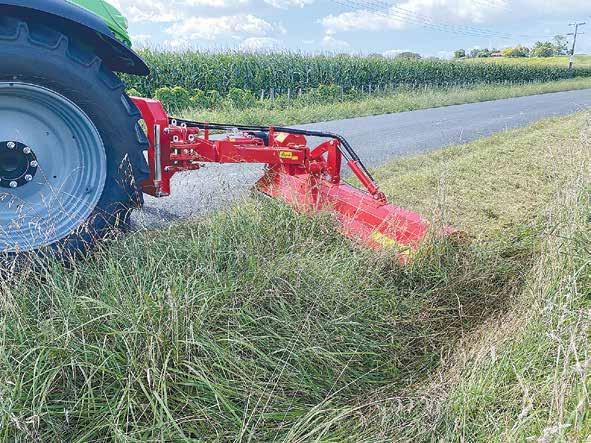
@rural_news
facebook.com/ruralnews
JUNE 2023 12 HORTNEWS
Mark Daniel markd@ruralnews.co.nz
The HP 200 Mulcher can be configured to suit several different situations.






















































